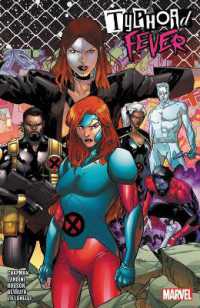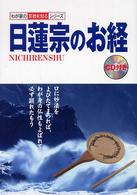Full Description
In order to learn, kids' need to move! Grounded in best practices and current research, this hands-on resource connects the dots that link brain activity, movement, and early learning. The expert authors unveil the Kinetic Scale: a visual map of the active learning needs of infants, toddlers, preschoolers, and primary graders that fits each child's individual timetable.
Teachers, parents, and caregivers will find a wealth of information, actionable tips, and games they can use to support children's healthy development—all presented in a lively, full-color format with demonstrative diagrams and photos. A final section offers easy-to-implement activities geared to the Kinetic Scale.
Downloadable digital content includes printable charts, games, and activities from the book plus a PowerPoint presentation for professional development, parent handouts, and bonus activities. An ideal tool for coaches, mentors, and trainers.Introducing the Kinetic Scale
unique framework encompassing all the elements of movement: reflexes, sensory tools (sight, hearing, smell, taste, touch, balance, and intuition), motor tools (power, coordination, and control), and language
based on six stages of movement development from birth to age 7: snugglers, squigglers, stompers, scampers, scooters, and skedaddlers
designed to foster a balanced diet of physical activity that helps each child move, grow, and learn on the child's individual timetable
Contents
List of Figures
List of Reproducible Forms
Foreword by Marcia Gentry
Introduction
Chapter 1: Giftedness Defined in Diverse Groups
Definition of Gifts and Talents
Identifying Giftedness Across Cultural, Linguistic, and Socioeconomic Communities
Twice-Exceptional Learners: Gifted Students with Learning or Behavior Challenges
Chapter Summary
Chapter 2: Using Brain Research to Improve Differentiation
Brain Research and Giftedness
Putting the Research to Practice
Chapter Summary
Chapter 3: The Common Core State Standards and Gifted Education
How Common Core State Standards Affect Gifted Students
Responding to the Common Core
Considerations in Reframing Curriculum for Gifted Students
Chapter Summary
Chapter 4: Defensible Programs and Services
General Characteristics of Gifted Elementary Students
General Characteristics of Gifted Secondary Students
Gifted Programming Models
Effective Grouping Practices within Gifted Program Options
Chapter Summary
Chapter 5: Creating Authentic Honors Courses
Articulation: Clearly Defining the Rigors of an Honors Course
Differentiating an Honors Course
Alignment: Effective Practices in Student Selection
Accountability: Continuous Review for Continuous Improvement
Chapter Summary
Chapter 6: Changing Roles for Educators of Gifted Students
Defining the Role of the Teacher
Teacher as Mindset Shifter
Teacher as Knowledge Guide
Chapter Summary
Chapter 7: Co-Teaching: A Collaborative Approach to Differentiation
The Roles of Classroom Teacher and Gifted Specialist
Co-Teaching Strategies for Addressing Learning Differences
Co-Planning Lessons for Gifted Learners
Chapter Summary
Chapter 8: Understanding and Reversing Underachievement
Defining Underachievement
Factors That Influence Academic Achievement Potential Risks for Underachievement
Reversing Underachievement
Chapter Summary
Chapter 9: Assessment and the Gifted Learner
Types of Assessment
Integrating Assessment into Instruction
Using Assessment with Gifted Students
Assessment That Builds Autonomy
Chapter Summary
Chapter 10: Leadership
Gifted Education Specialist: Administrator or Teacher Leader?
Embedding Differentiation for Gifted Learners into Classroom Practice
Instructional Coaching
Lesson Study
Chapter Summary
Chapter 11: Next Steps
References and Resources
Index
About the Authors








